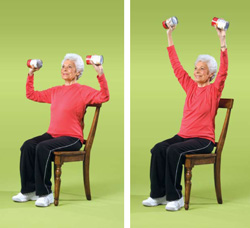Activity is important to each of us, regardless of age. However, a sedentary lifestyle aggravates the loss of physical capacity that accompanies aging. Activity is the only way to prevent wasting away and the only way to maintain the physical capacity for strength, speed, and coordination that is so important to help elders stay active. Motion increases blood circulation, which improves function of all body parts, particularly the cardiovascular and respiratory systems. Motion also helps maintain and even increase the range of motion in joints, prevents deformities, maintains and increases muscle strength following sickness and injury, aids healing, and prevents swollen feet/legs and skin breakdown.
Benefits to Exercising when Elders Stay Active Include:
- Improved oxygen consumption during exertion, for better conditioning
- Lowered heart rate while resting, so organs work more efficiently
- Increased muscle tone
- Decreased body fat
- Maintaining flexible joints
- Reduced blood pressure
- Release of muscular tension
- Reduced pain
- Increased strength and mobility
Regular exercise makes smooth, relaxed movement habitual and prevents “contractures,” or permanent shortening of muscles, tendons and scar tissue. Contractures cause elders to move and do less and feel uncomfortable. Aging slows all body activities. Unless a plan of activity is carried out, an elder loses more and more of his ability to perform all motion. Exercise does not need to be painful and should not loom as a hated chore to be endured. Attitude affects physical therapy. The greater the elder’s initiative, self-motivation, and positive attitude, the more effective the therapy. The goal should be to help elders stay active by replacing range-of-motion repetitions with walking, while performing household activities, or swimming thereby increasing not only function but socialization, self-image, and body awareness. Physical therapy should involve safe, consistent, and effective completion of purposeful tasks. Mastery of exacting movements and completion of artificial tasks is not necessary. It’s never too late to reap the benefits of fitness. Most of us are unduly negative about what elders can physically accomplish. We must all be more optimistic. Working aging muscles strengthens them; and extra strength improves quality of life. Those who are physically active every day are less depressed, more mobile, more likely to participate in activities, and sleep better!

